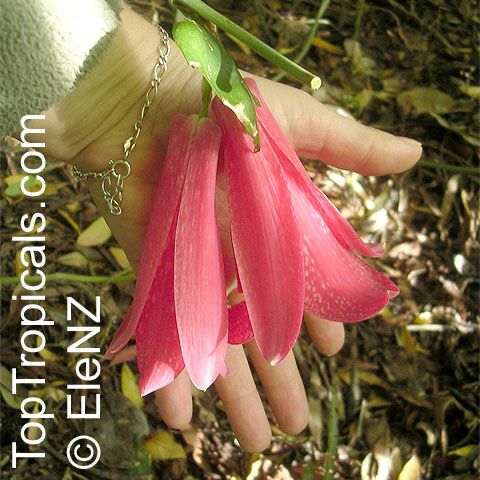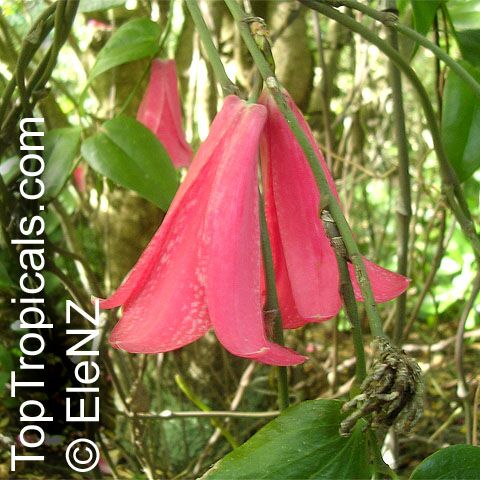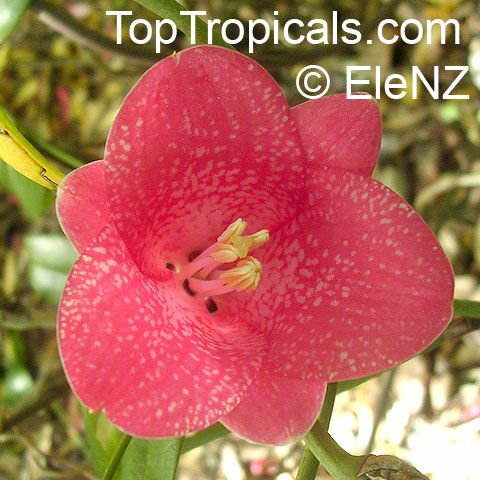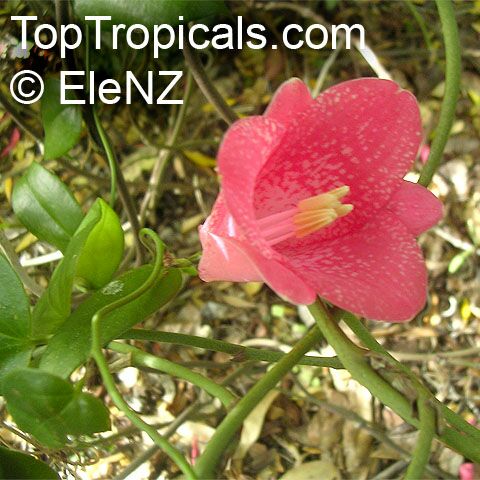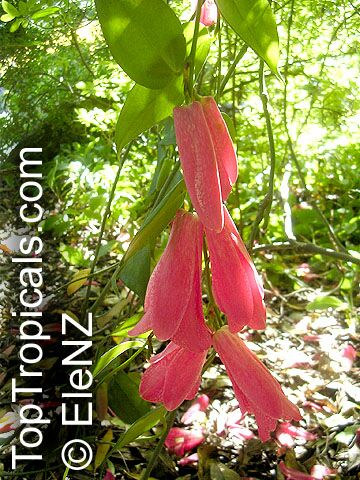Lapageria rosea (Copihue)
Top Tropicals Plant Encyclopedia
Botanical name: Lapageria rosea
Common names: Copihue, Chilean Bellflower
Family: Philesiaceae (Formerly:Philesiaceae / Liliaceae)
Origin: Chile









Lapageria rosea, also known as the national flower of Chile where it is called Copihue, are an attractive evergreen creeper that can be grown in full sun or semi-shade. They need regular watering and a liquid fertilizer every two weeks during spring and summer.
The long-lasting, waxen blooms are very heavy in texture and are most often bright watermelon red, though they can also be shades of white, pink, apricot, or dark red. The vines are laden with leathery, evergreen foliage and may reach heights of 10 feet or more, blooming profusely late summer through fall. It is recommended to keep the main stem pruned to about 4 feet for easier control and to prune back any branches that start to sprawl.
Best grown in USDA Zones 9-11. In cold regions, it is best to grow Lapageria rosea in a container and over winter in a cool greenhouse with a minimum temperature of 45F. These plants prefer bright shade and cool, moist conditions with rather rich and loamy soil.
These plants can produce up to 3 fruit stalks each year with an average of 10 to 12 sweet and tender fruits per stalk, known as 'cucumbers'. These fruits are high in Vitamin C and fiber and have antioxidant properties.
